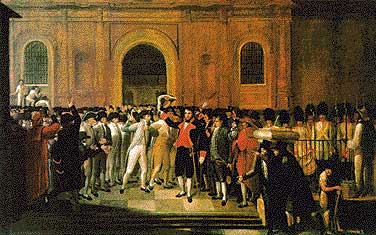 CARACAS - HISTORY
SEE MORE IN ANCIENT PEOPLE OF CARACAS VENEZUELA
CARACAS - HISTORY
SEE MORE IN ANCIENT PEOPLE OF CARACAS VENEZUELA
More than five hundred years ago, the area was populated by indigenous peoples and Caracas did not exist. Francisco Fajardo, a Spanish colonial, attempted to establish a plantation there in the year of 1562. Fajardo's stay in the valley did not last long, and he was expelled by the locals. This was the last rebellion on the part of the aborigines, for on July 25th, 1567, the Spanish captain Diego de Losada laid the foundations of the city of Santiago de León de Caracas. The cultivation of cocoa stimulated the development of the city which became the capital of the province of Venezuela in the Viceroyalty of New Granada.
An attempt at revolution to gain independence organized by José María España and Manuel Gual was put down on July 13th, 1797. But the ideas of the French Revolution and the American Wars of Independence inspired the people, and on July 5, 1811 a Declaration of Independence was signed in Caracas. This city was the birthplace of two of Latin America's most important figures: Francisco de Miranda and "El Libertador" Simón Bolívar. An earthquake destroyed Caracas on March 26th, 1812 and was portrayed by authorities as a divine punishment for rebelling against the Spanish Crown, during the Venezuelan War of Independence. The valley became a cemetery, and the war continued until June 24th, 1821, when Bolívar gained a decisive victory over the Royalists at Carabobo.

As the economy of oil-rich Venezuela grew steadily (during the first part of the 20th Century), Caracas became one of Latin America's economic centers, and was also known as the preferred hub between Europe and South America. During the 1950s, Caracas began an intensive modernization program which continued throughout the 1960s and early 1970s. The Universidad Central de Venezuela, designed by modernist architect Carlos Raúl Villanueva and now a UNESCO monument, was built. Joining El Silencio, also by Villanueva, several workers' (23 de Enero, Simon Rodriguez) and new middle class residential districts (Bello Monte, Los Palos Grandes, Chuao, Cafetal, etc.) sprouted in the valley, extending its limits towards the East and South East. On October 17, 2004, one of the Parque Central towers caught fire. The change in the economic structure of the country, now oil dependent, and the fast development of Caracas made it a magnet for the rural communities who migrated to the capital city in an unplanned fashion, creating the ranchos (slum) belt in the valley of Caracas.